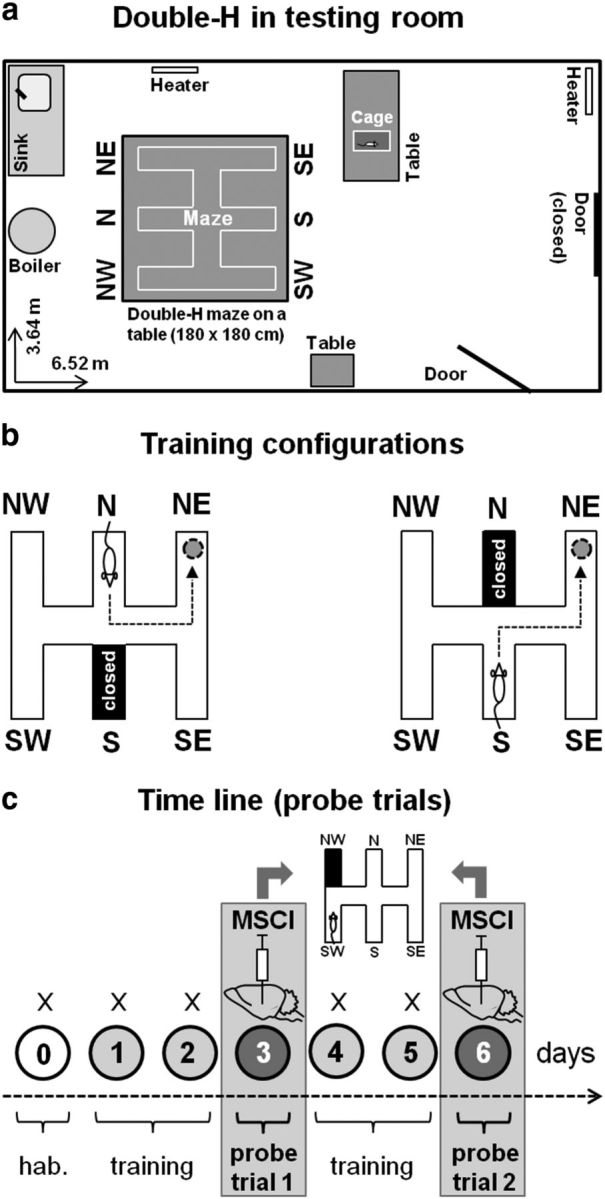Figure 1.

The double-H test, training, and reversible inactivation protocols. a, Top-view drawing of the overall organization of the room in which the double-H device was installed (Maze). For a photograph of the device, see the study by Pol-Bodetto et al. (2011). b, Illustration of the configurations used during maze training. The rats were given four daily trials for which they were released twice from the S and twice from the N (in a randomized order, e.g., N, S, S, N on day 1, S, N, S, N on day 2, etc.). The platform was always located in the NE arm. The arm opposite to the one in which the rats were placed at the start of each of the four daily trials was always closed by a transparent guillotine door (it corresponds to the black-colored arm). The most direct swim paths to the escape platform consisted of successive left–left or right–left turns. This training procedure did not prevent spatial learning because rats do shift from a response memory-based to a spatial-memory-based strategy during negative feedback in a misleading probe trial (Cassel et al., 2012). c, Time line of the training days and probe trials in the double-H test. After a habituation day (0), rats were trained for 2 consecutive days (1, 2), given a first 24 h delayed probe trial (3), trained for two additional days (4, 5), and given a second 24 h delayed probe trial (6). Thirty minutes before each probe trial, approximately half of the rats were infused with 0.26 or 0.70 nmol in 1 μl of MSCI in the mPFC or dHip in the first experiment or with 0.26 or 0.70 nmol in 0.3 μl of MSCI in the ReRh in the second experiment, with the others being infused with an equivalent volume of PBS as a control. For both probe trials, rats were released from the SW arm, the NW one was closed by a guillotine door, and the platform had been removed from the device. Each probe trial lasted for 60 s. Before being trained and tested in the double-H maze, all rats had been subjected to a classical spatial learning task in the water maze and given mPFC, dHip, or ReRh inactivation before a standard probe trial at a 24 h post-acquisition delay.
